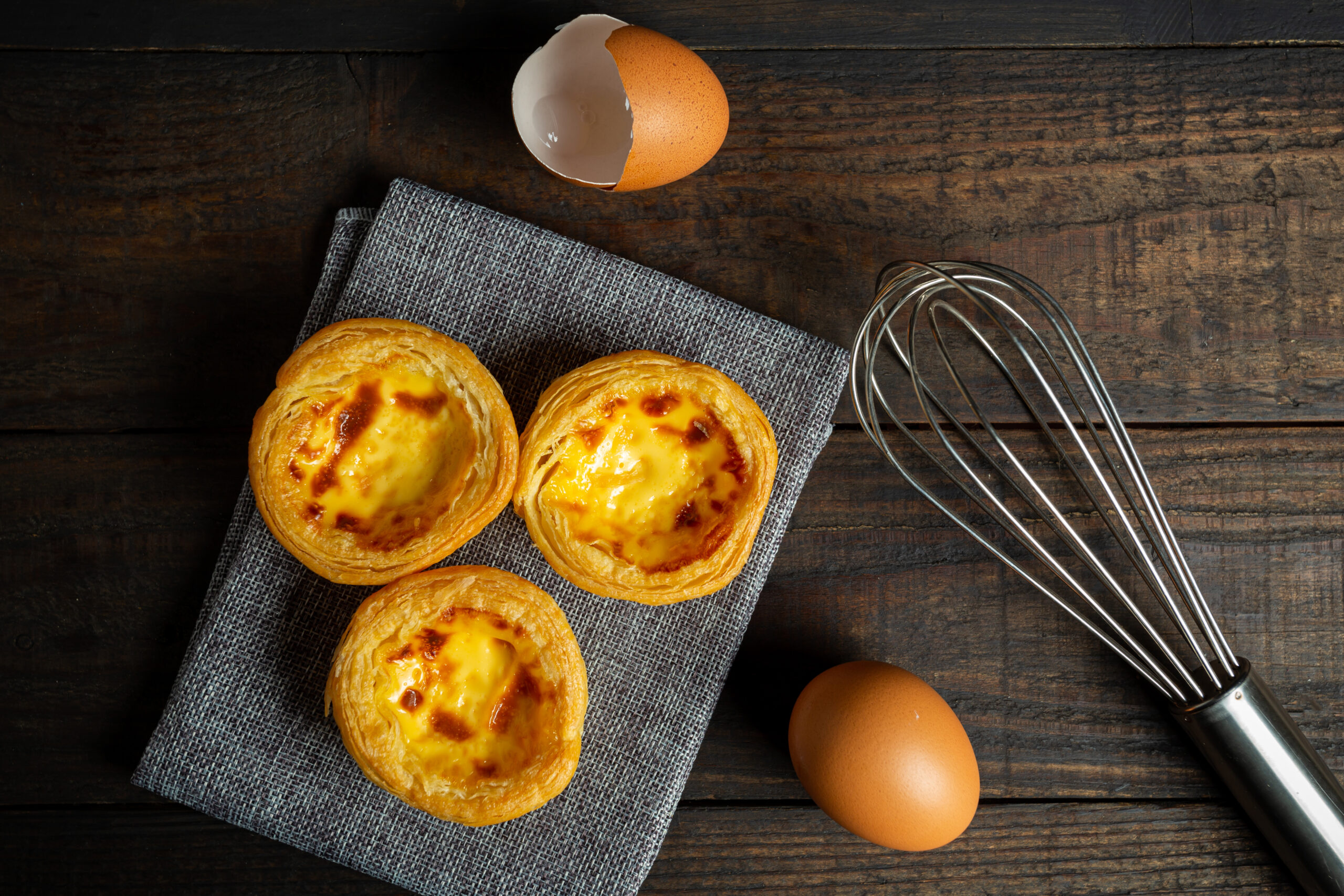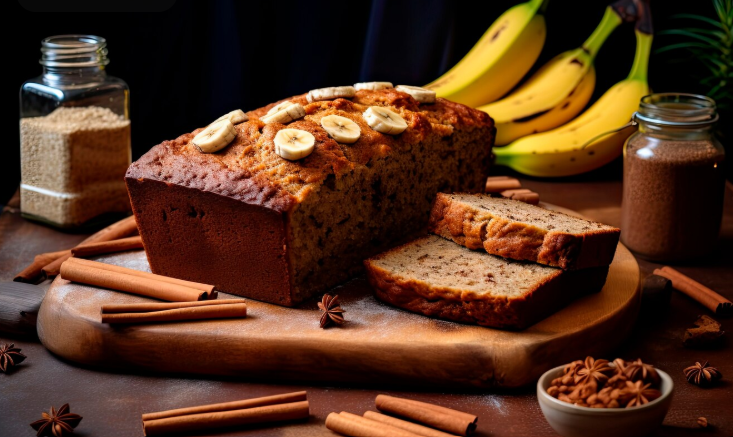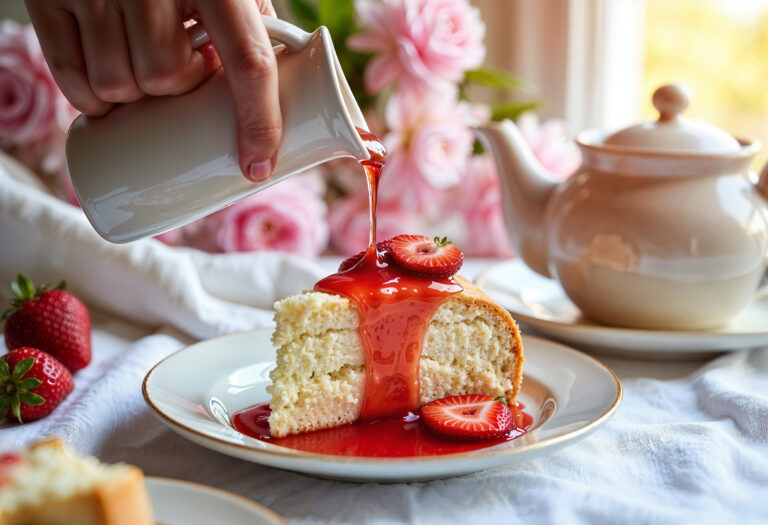Irresistible Portuguese Pasties de Nata : A Homemade Egg Tart Recipe Straight from Lisbon
There’s a kind of joy that comes from baking something nostalgic—something that carries stories, travels, and the warmth of shared moments. Portuguese Pasties de Nata, or Portuguese egg tarts, do exactly that. They’re more than a dessert; they’re a taste of culture, wrapped in layers of flaky pastry and golden custard. And the best part? You don’t need to book a flight to Lisbon—you can make them right in your own kitchen.
Let’s walk through everything you need to know to master this homemade Portuguese egg tart recipe, from the history behind it to foolproof baking tips.
Table of Contents
🥐 What Are Pasteis de Nata ?
You’ve probably seen these tarts in bakery windows: tiny, golden cups with creamy centers and a slightly caramelized top. But their roots go deep.
Centuries ago, Catholic monks in the Jerónimos Monastery in Lisbon began baking these egg tarts using leftover egg yolks—egg whites were used to starch clothing. The result? A sweet treat that would become Portugal’s most famous pastry. Today, these custard tarts are found everywhere from neighborhood cafés in Porto to high-end bakeries in Paris and Tokyo.
What makes Pasteis de Nata stand out:
- Buttery, flaky puff pastry shell
- Silky, cinnamon-and-lemon-infused custard
- Signature burnt top that adds caramel depth
🧂 Ingredients for Homemade Portuguese Egg Tarts
Before you dive into baking, gather everything you need. Here’s a simple, no-alcohol, no-pork, and wine-free ingredient list that respects dietary preferences without compromising on authenticity.
Ingredients Table

| Ingredient | Amount |
|---|---|
| Puff pastry sheets | 1–2 sheets |
| Whole milk | 250 ml |
| Heavy cream | 100 ml |
| Sugar | 150 g |
| Egg yolks | 5 |
| All-purpose flour | 20 g |
| Cornstarch (optional) | 10 g |
| Lemon zest | 1 tsp |
| Cinnamon stick | 1 |
| Vanilla extract (optional) | 1 tsp |
✅ Tip: Use good-quality puff pastry—it makes all the difference.
👨🍳 Step-by-Step Guide: How to Make Portuguese Egg Tarts at Home
This recipe breaks down into three easy parts: the custard, the pastry, and the bake.
1. Prepare the Custard
You’ll start by heating milk, cream, cinnamon stick, and lemon zest in a pot until warm (not boiling). In a separate bowl, whisk together the sugar, flour, and cornstarch. Slowly pour the warm milk into the dry mix while stirring to avoid lumps. Add the egg yolks last, and cook gently over medium heat until the mixture thickens—like a pourable pudding.
2. Shape the Pastry
Unroll the puff pastry and roll it again into a tight log. Slice it into 12 rounds. Press each round into the cavity of a muffin or tart tin using your thumbs, working from the center outward to create the signature flared shape. Chill the pastry for at least 10 minutes before filling.
3. Assemble and Bake
Preheat your oven to 250°C (480°F)—a high temp is key to that beautiful caramelized top.
- Pour the custard into the tart shells, leaving about 1/4 inch of space from the rim.
- Bake for 12–15 minutes, or until the tops are browned and the pastry is golden.
Let the tarts rest for 5 minutes before serving. Enjoy them warm with a dusting of cinnamon or powdered sugar.
🍯 Tips for Perfect Homemade Pasteis de Nata
Want bakery-level results? Here’s how to level up your tart game:
- Use chilled pastry for flakier layers
- Don’t overfill the shells—the custard expands while baking
- Bake hot and fast to get that caramelized top without burning the bottom
- A non-stick or silicone tray makes removal easier
- Rotate the tray halfway through baking for even browning
🍽 How to Serve and Store Portuguese Egg Tarts
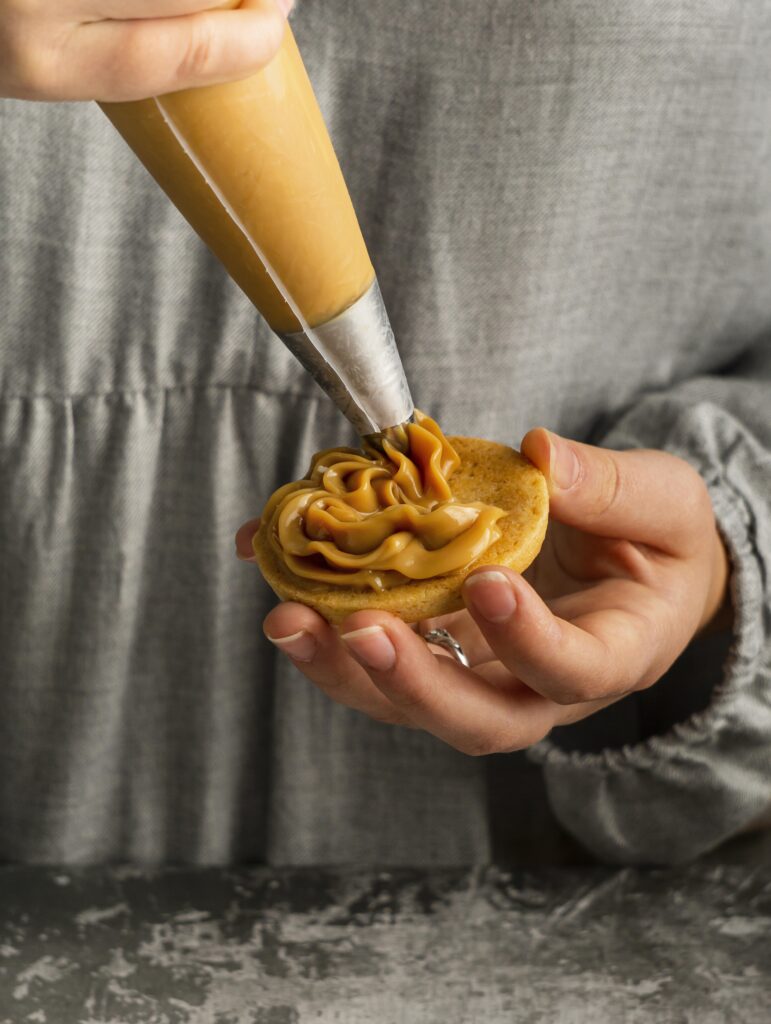
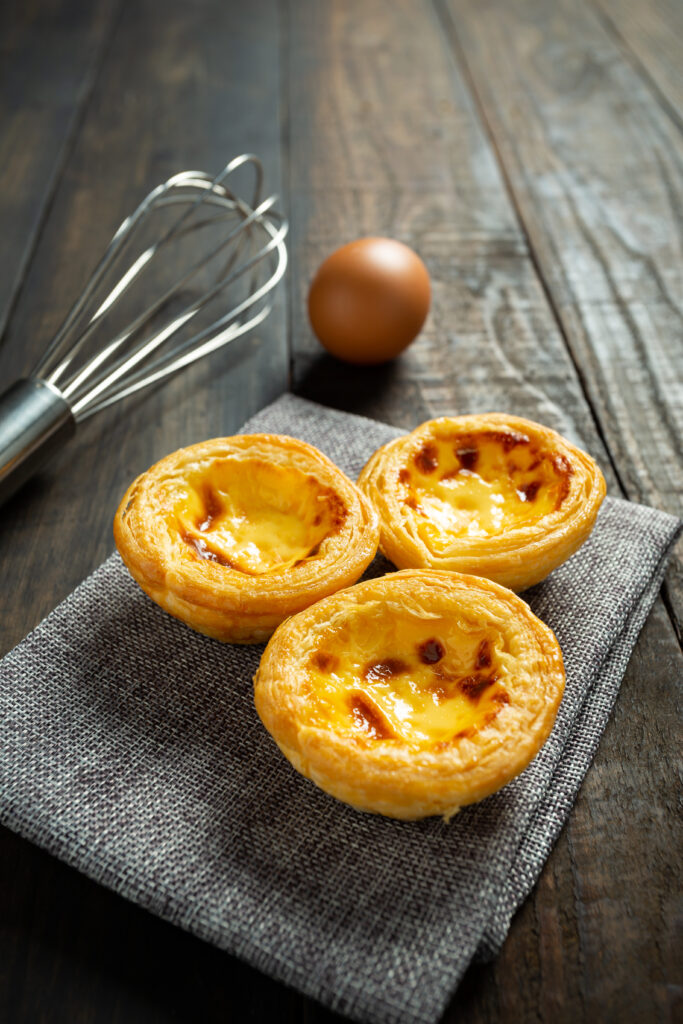
Serving Ideas:
- Dust with cinnamon or powdered sugar
- Pair with black coffee or mint tea
- Serve fresh and warm—it’s how locals enjoy them in Portugal
Storage Tips:
- Best eaten the day they’re baked
- Store leftovers in an airtight container at room temperature for up to 2 days
- Reheat in the oven (not microwave) to bring back the crispiness
🌐 Global Variations You May Like
While Lisbon is home to the original, countries across the world have embraced their own versions.
- Macau-Style Tarts – Sweeter, with a more jelly-like filling
- Hong Kong Egg Tarts – Often served cool with a smooth surface
- Vegan Tarts – Use oat or almond milk and egg alternatives like cornstarch and tofu
- Gluten-Free – Replace pastry with gluten-free puff pastry or almond crust
❓ Frequently Asked Questions
Can I use store-bought puff pastry?
Absolutely. It saves time and still delivers flaky results—just keep it cold until shaping.
Why aren’t my tarts browning on top?
Your oven might not be hot enough. For that signature caramelized top, temperatures over 230°C are key.
Can I make the custard ahead of time?
Yes! Refrigerate it for up to 24 hours. Bring to room temperature before baking.
Can I freeze the tarts?
They’re best fresh, but you can freeze them after baking. Reheat in the oven to restore the texture.
🏁 Conclusion: Bring Lisbon to Your Kitchen
You don’t need a plane ticket to experience the joy of Pasteis de Nata. With this homemade Portuguese egg tart recipe, you can bring the essence of Portugal into your home. From the flaky crust to the smooth custard and caramelized top, every step is a celebration of tradition—and a new memory in the making.
So what are you waiting for?
🔥 Preheat your oven. Grab that rolling pin. It’s time to taste Portugal.
👍 Liked this recipe? Share it with a friend, or leave a comment below and tell us how yours turned out!

